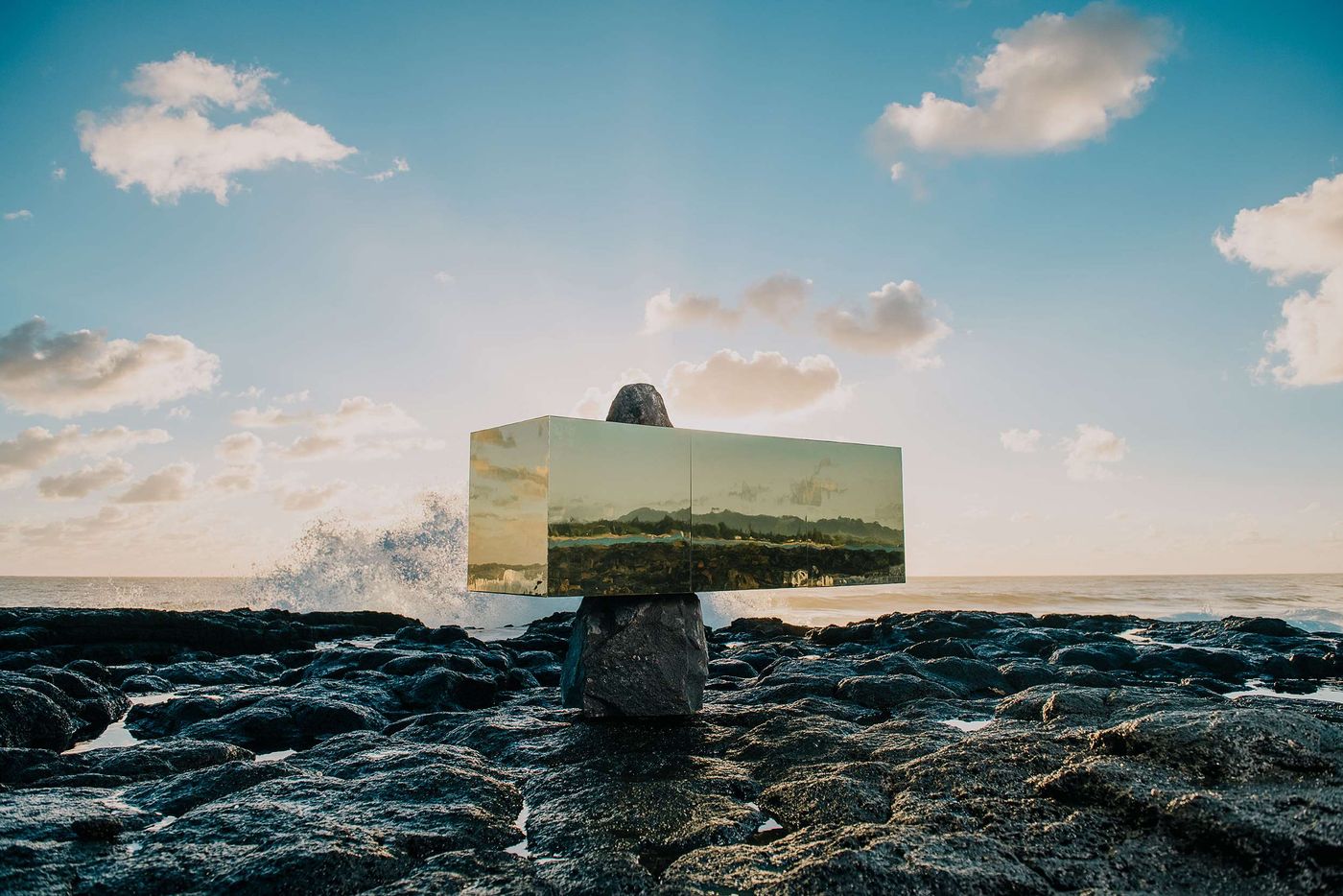
CYPRAEA: Cedric Lincoln Showcases the Natural Wonders of Mauritius with an Exclusive Furniture Brand
Words by Eleni Papaioannou
Location
CYPRAEA: Cedric Lincoln Showcases the Natural Wonders of Mauritius with an Exclusive Furniture Brand
Words by Eleni Papaioannou
One of the most distinctive brands that caught our attention during Milan Design Week was CYPRAEA, a Mauritius-based company that reflects the country’s tropical environment, aiming to become the first ambassador of Mauritian Luxury Style that blends design with nature in perfect harmony. Founded in 1974, the company - the oldest furniture manufacturer in Mauritius – was rebranded in 2016 to Mavenci (“Maven” meaning timber experts, and “Chi” being the Chinese word for energy) by Cedric Lincoln who took the helm two years earlier. In 2017, Cedric started contemplating an export line with the vision of bringing Mauritian Soul to the international stage but to do so he needed to find an open-minded designer who would bring a different perspective to the table. Enter Italian architect & designer Francesco Maria Messina who joined the company in 2018 and together with Cedric created CYPRAEA as a unique and exclusive brand exporting and introducing Mauritius’ ‘best of’ to the rest of the world. Cedric recently talked to Yatzer about the brand’s naturalistic vision, his drive for sustainability, and how Francesco’s architectural sensibility has influenced the current collection.
(Answers have been condensed and edited for clarity.)
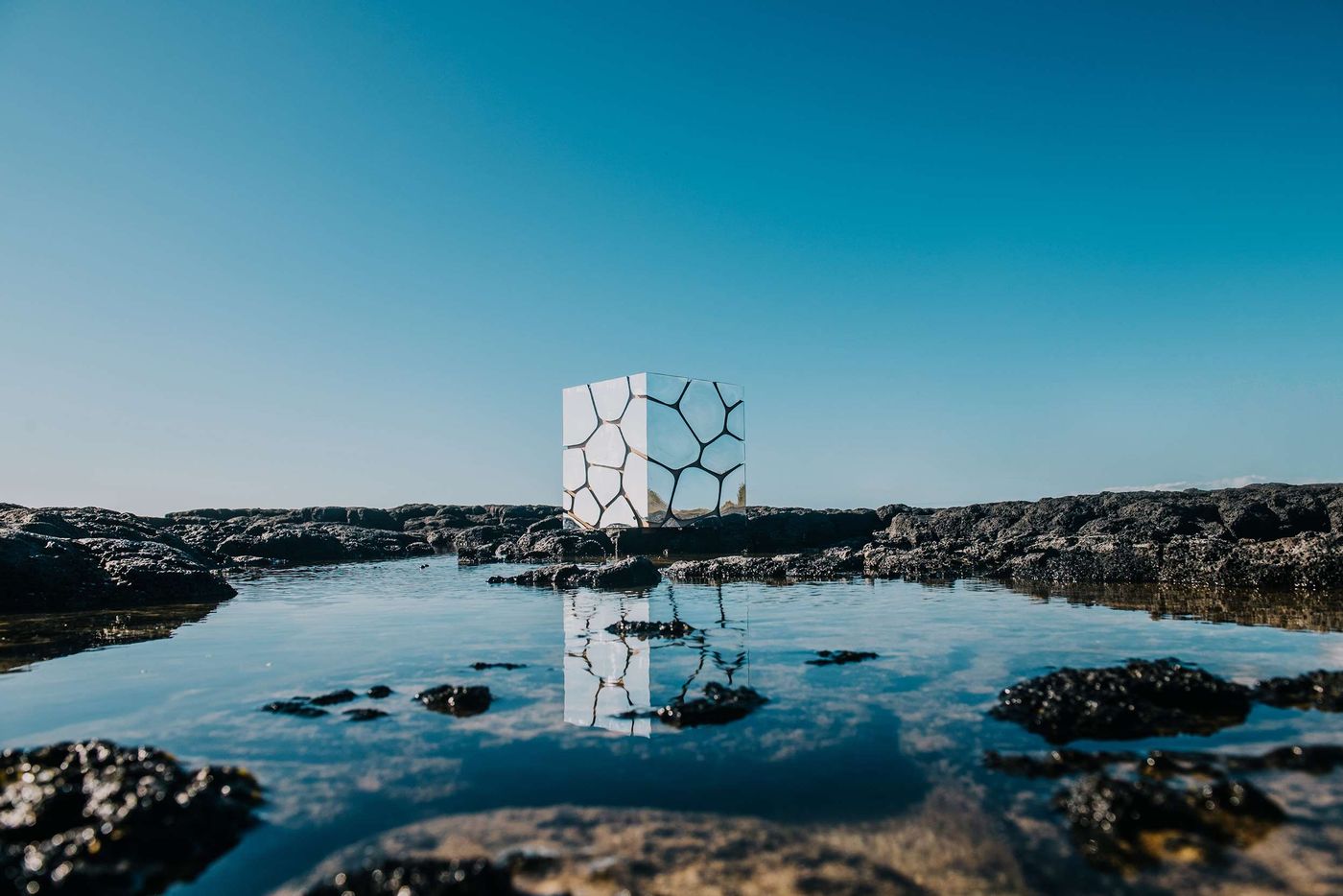
Aqua Bar Cube Silver by architect Francesco Maria Messina for Cypraea.
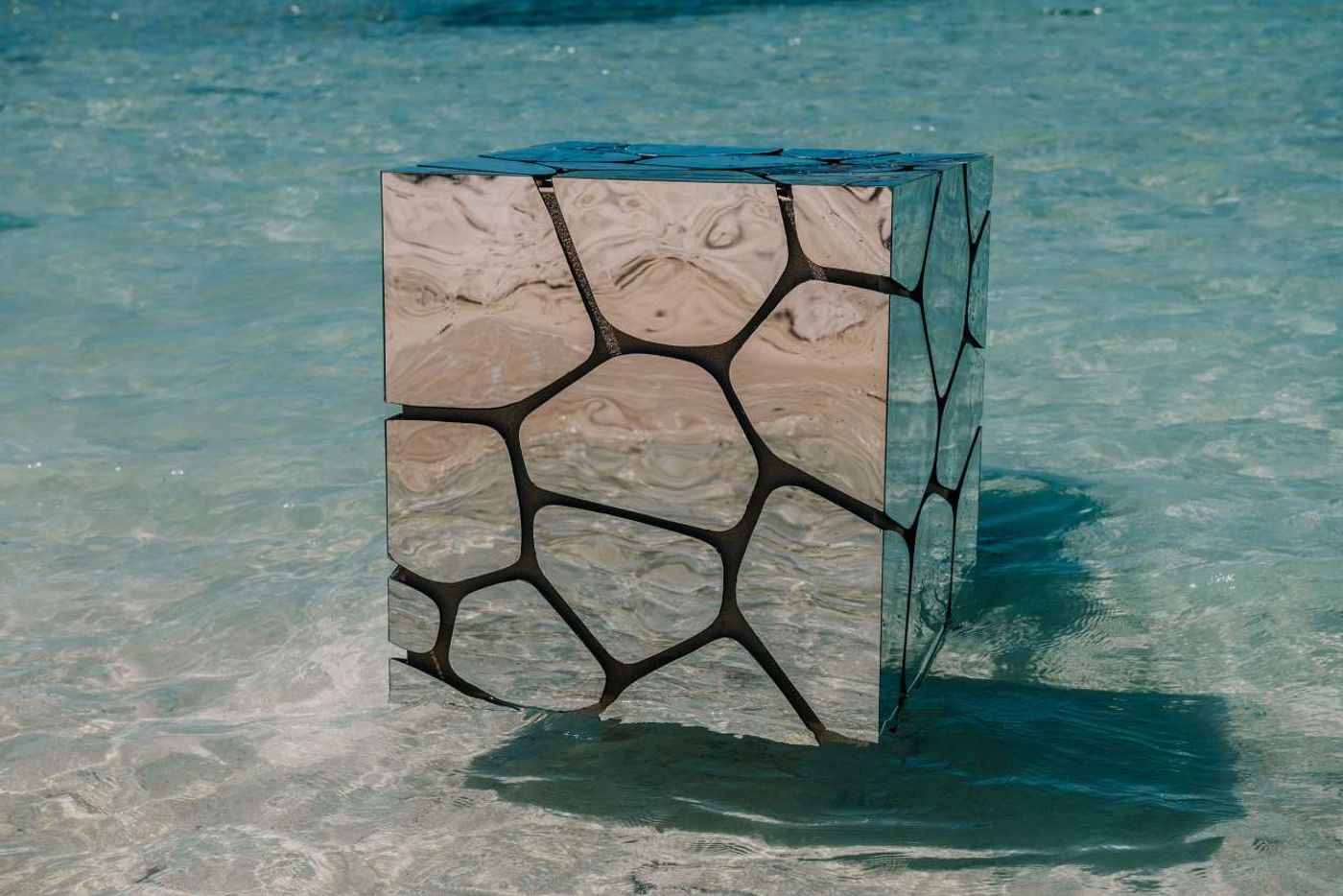
Aqua Bar Cube Silver by architect Francesco Maria Messina for Cypraea.
What was the inspiration behind Cypraea?
We knew that the Ocean, where all life began, had to be the starting point for our journey. That’s where the shell, i.e. Cypraea is found. Mauritius is a small island that is comparable to a beautiful shell, which, despite being small, possesses a rarity and charm that enables it to be cherished and preserved like a treasure. As a brand, Cypraea seeks to convey the preciousness and inimitable uniqueness of the land through innovative and original designs.
You’ve said that the brand was born from a desire to connect people to nature. What do you hope will come out of this connection?
I feel that nature with its positive energy carries every answer, hence the reason why today you see more and more natural therapies. Cypraea’s desire is to surprise and astound, create feelings through materials and design one-of-a-kind works of art that evoke timeless beauty - like the rarest of treasures found in the ocean.We are moving against the tide, moving from the southern to the northern hemisphere where most of the brands come from to sell their furniture. And while most of them are using [artificial] materials that imitate real materials, we use only real materials.
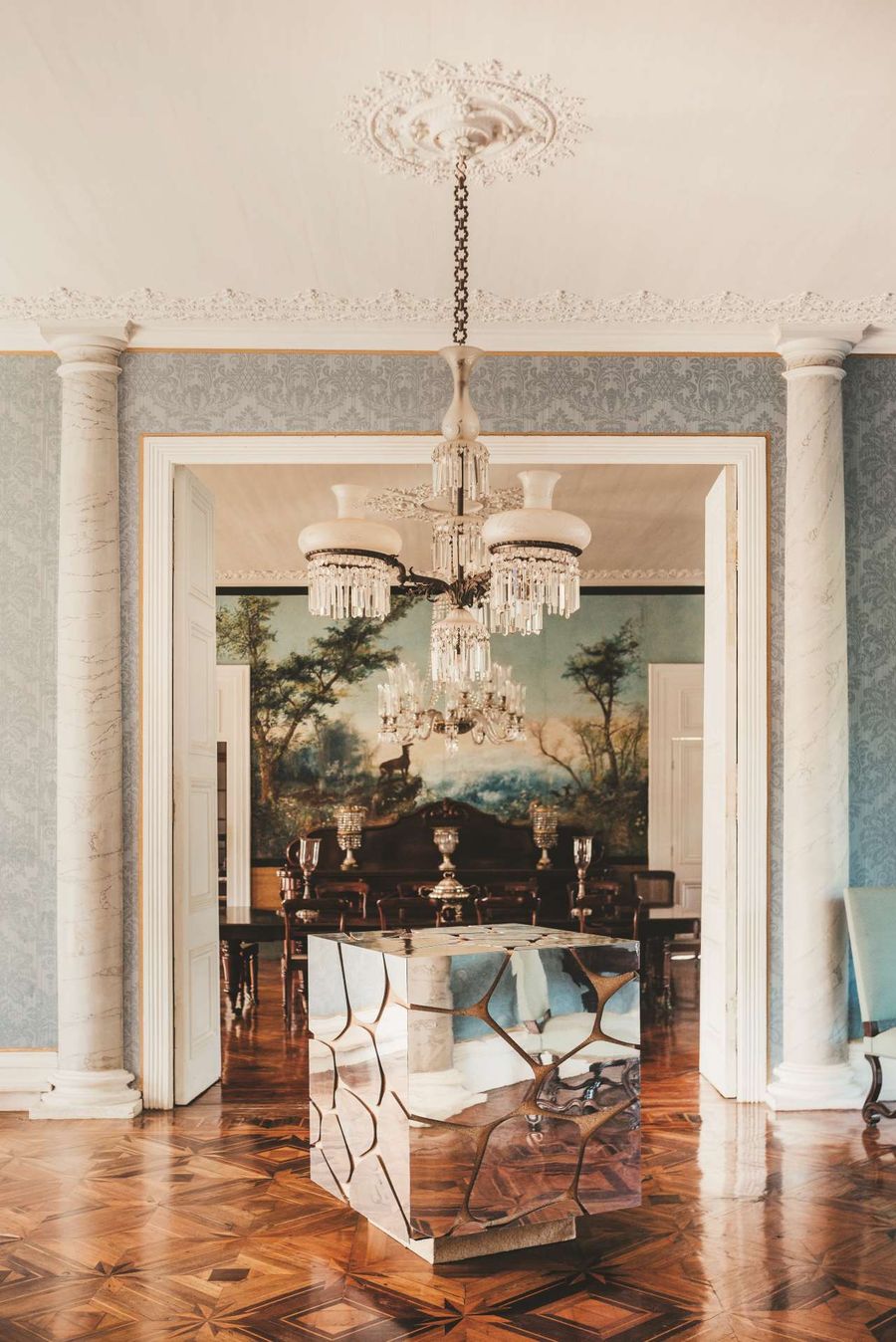
Aqua Bar Cube Silver by architect Francesco Maria Messina for Cypraea.
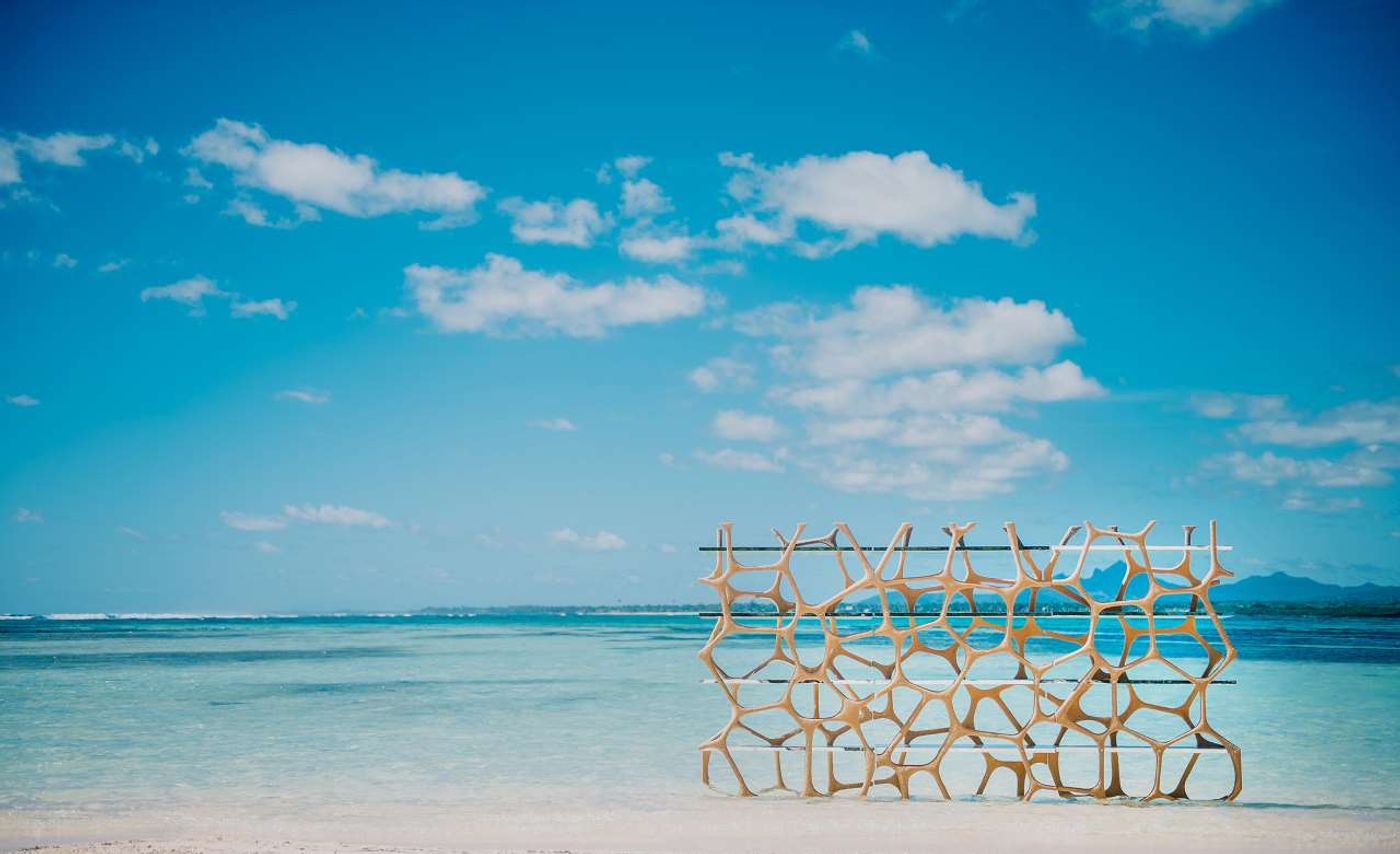
Aqua Shelf Silver by architect Francesco Maria Messina for Cypraea.
We don’t want our furniture to become obsolete in a few years nor do we want it to be associated with fashion or trends. I would love to know that one day parents will pass on our furniture to their children as people used to do in the past. -Cedric Lincoln
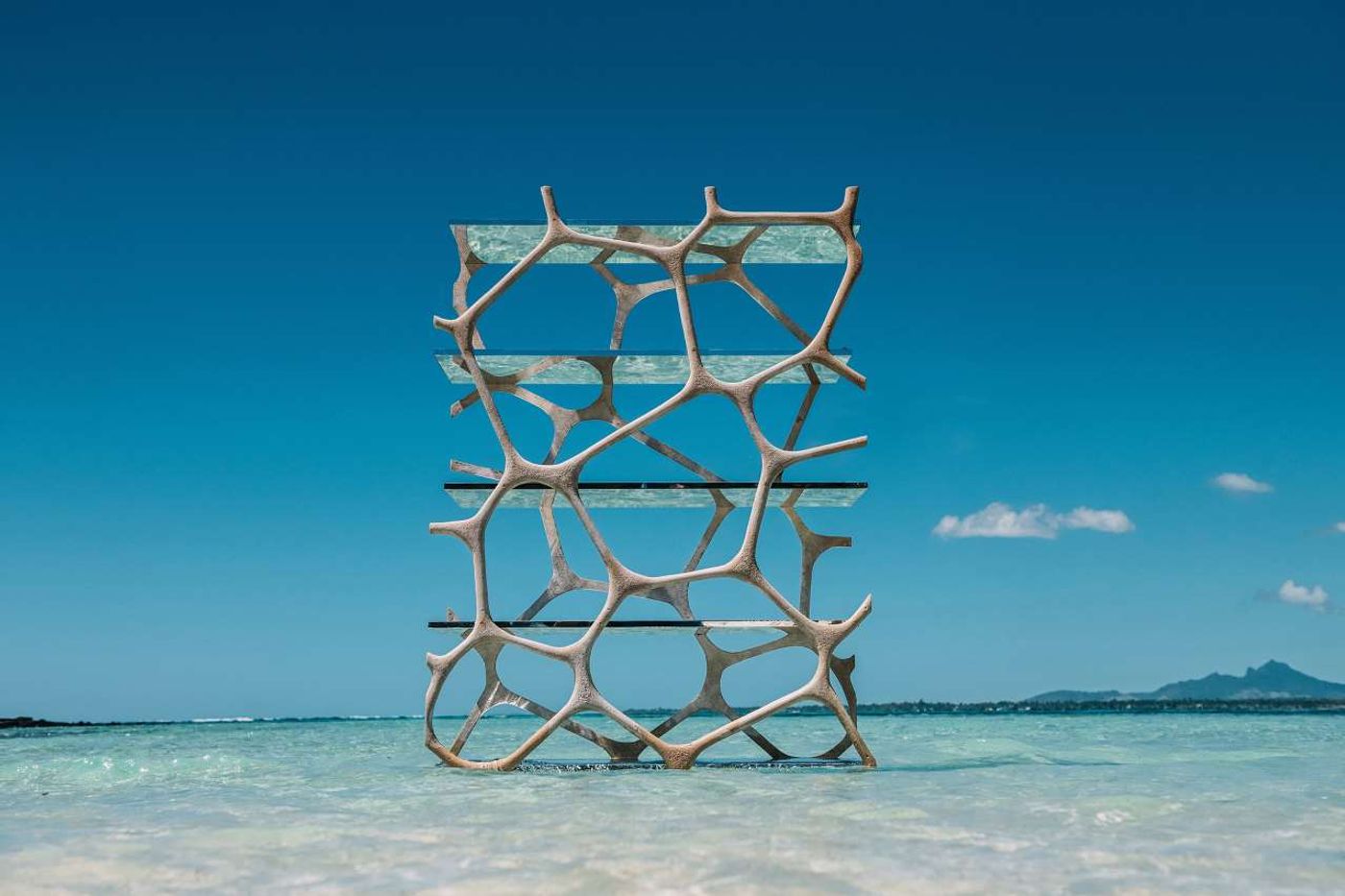
Aqua Shelf Silver by architect Francesco Maria Messina for Cypraea.
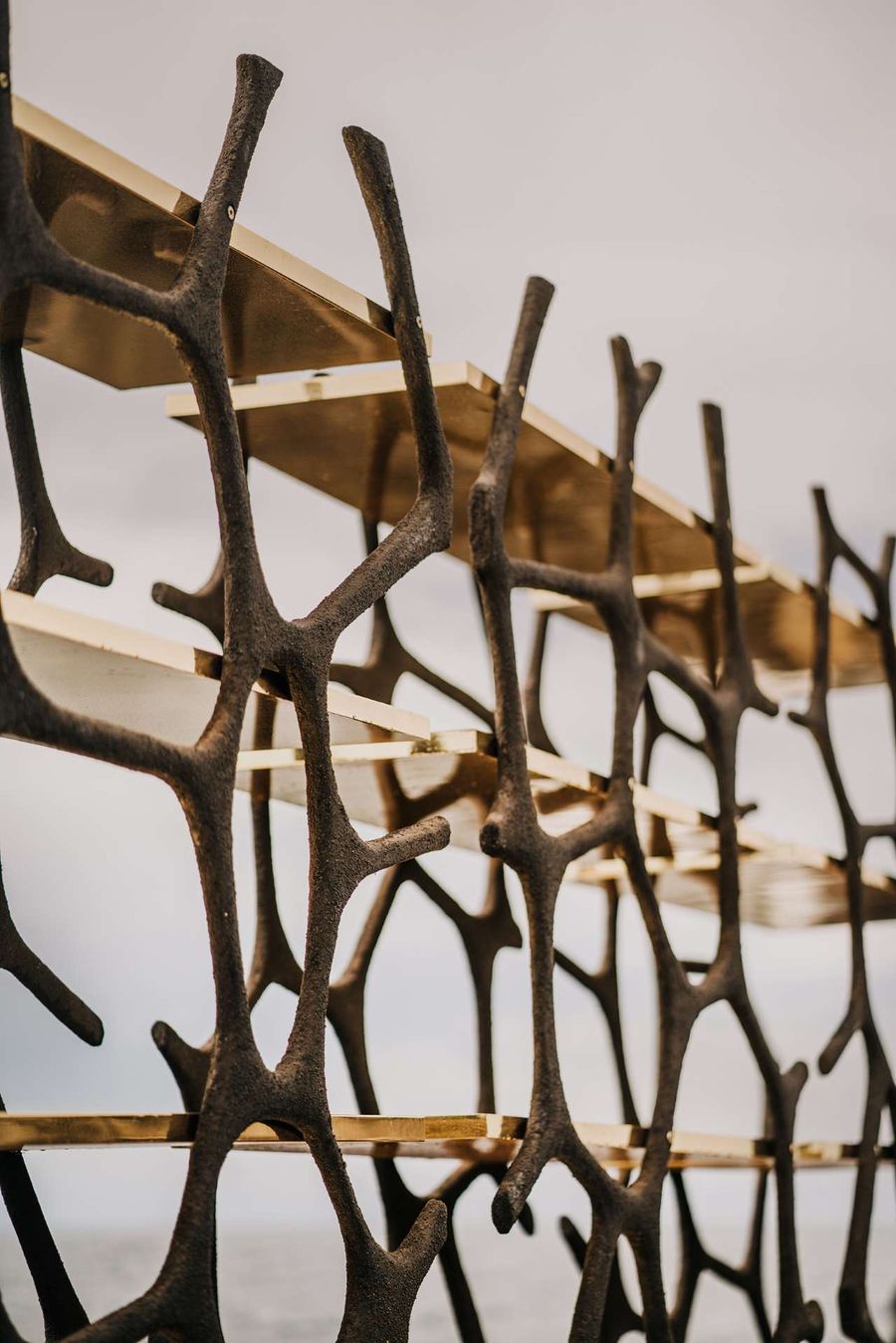
Aqua Shelf Gold by architect Francesco Maria Messina for Cypraea.
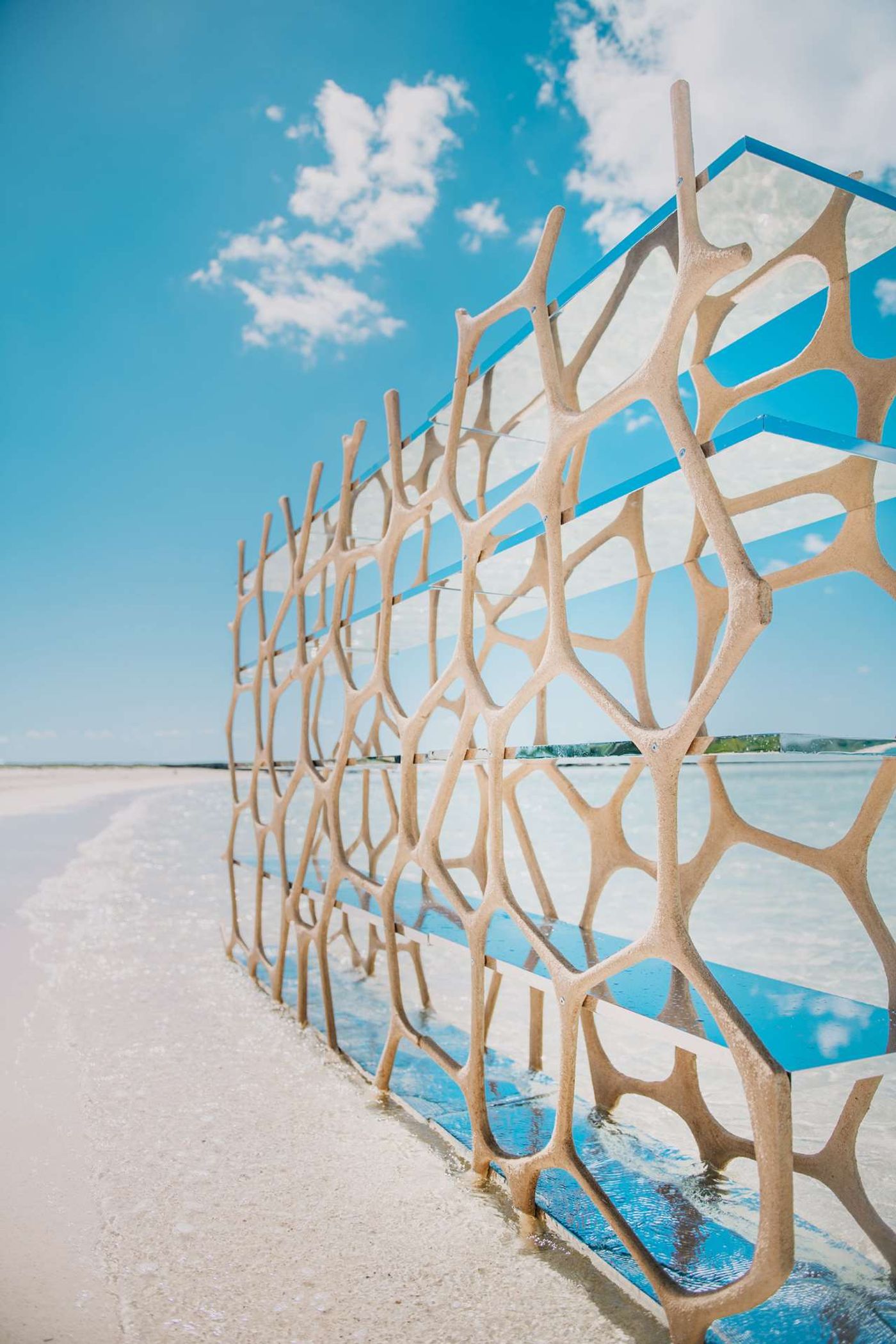
Aqua Shelf Silver by architect Francesco Maria Messina for Cypraea.
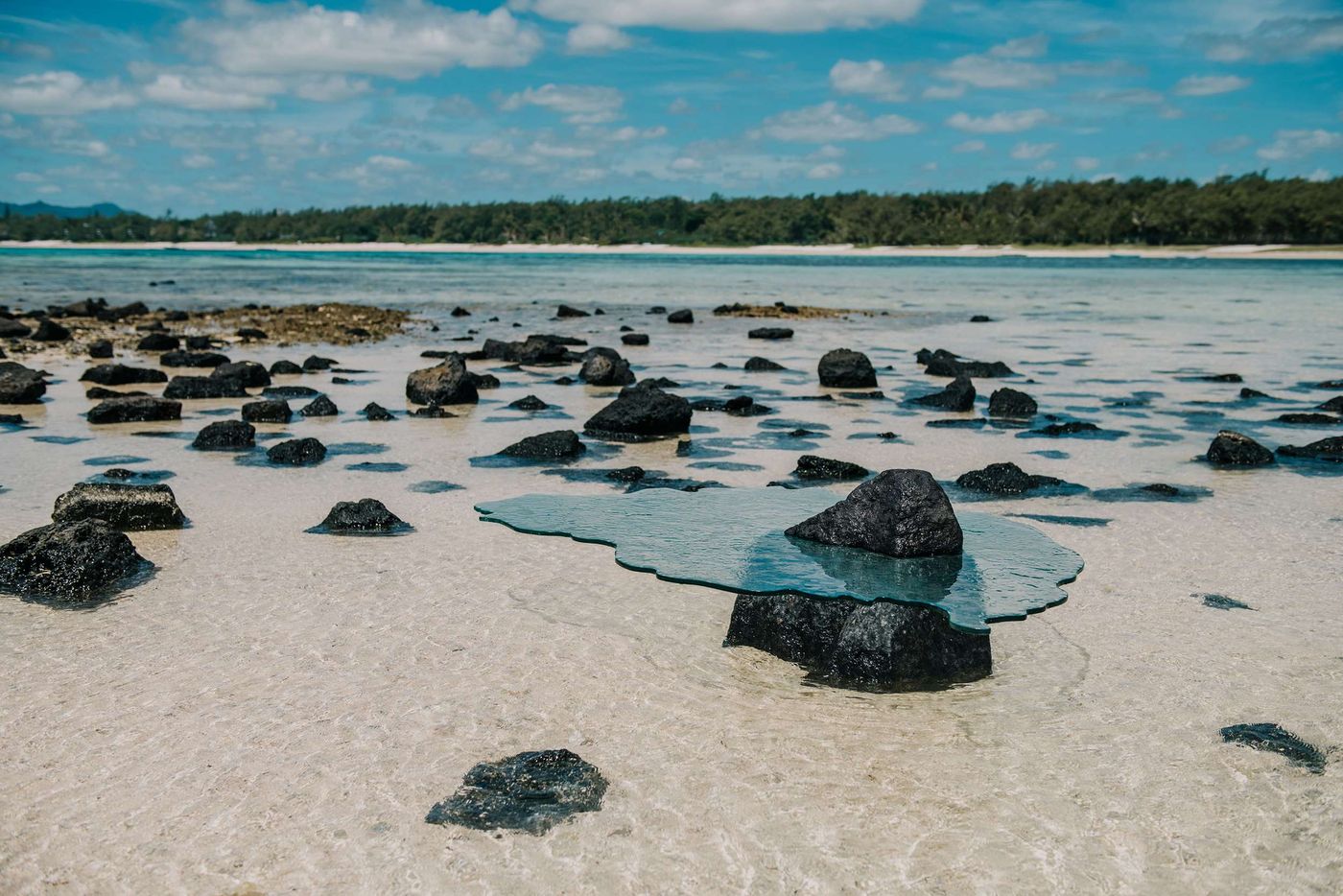
Ile Maurice low table by architect Francesco Maria Messina for Cypraea.
Did you and Francesco have distinct roles in the creative process?
Francesco is an Italian architect who studied in France with star-architect Odile Decq; his background is influenced by architecture, urbanism and the arts. After living here for a while, he found inspiration in the beauty of the island. Together we decided that nature should become the main inspiration for all of Cypraea’s collections.
In creating our design identity based on the characteristics of Mauritius, he researched and drew countless sketches until we agreed on the final prototypes that would be produced together. We split our roles between his creativity and my pragmatism as well as my experience in the field of furniture making.
This was indeed a very stimulating process as it allowed us both to push his ideas even further and to find technical solutions together until we agreed on the final products that we are now so proud of.
In the end, after a number of major difficulties we encountered in the process, we managed to send 19 different pieces for our first exposition in Milan, which is great for a new brand that is not even one year old.
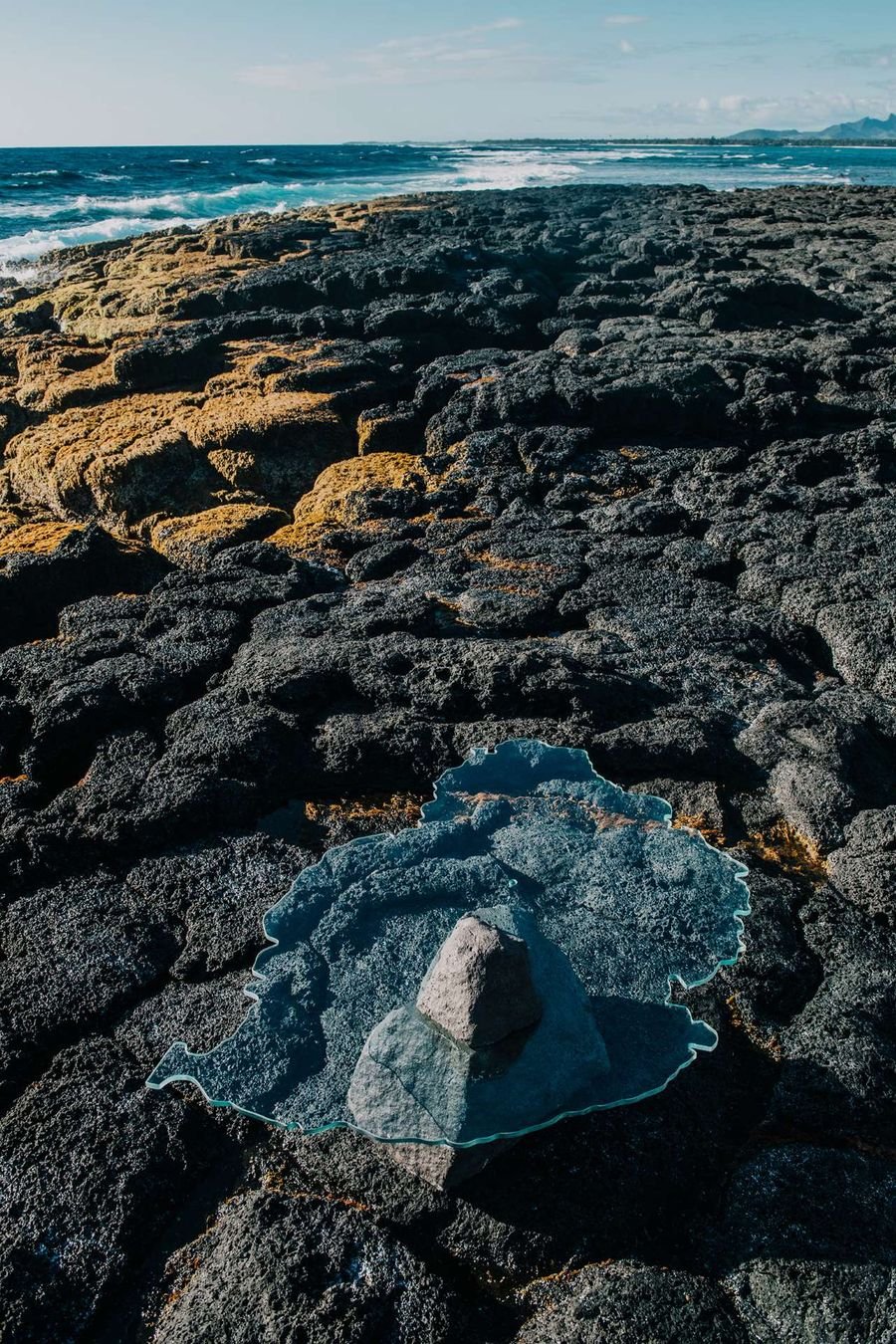
Ile Maurice low table by architect Francesco Maria Messina for Cypraea.
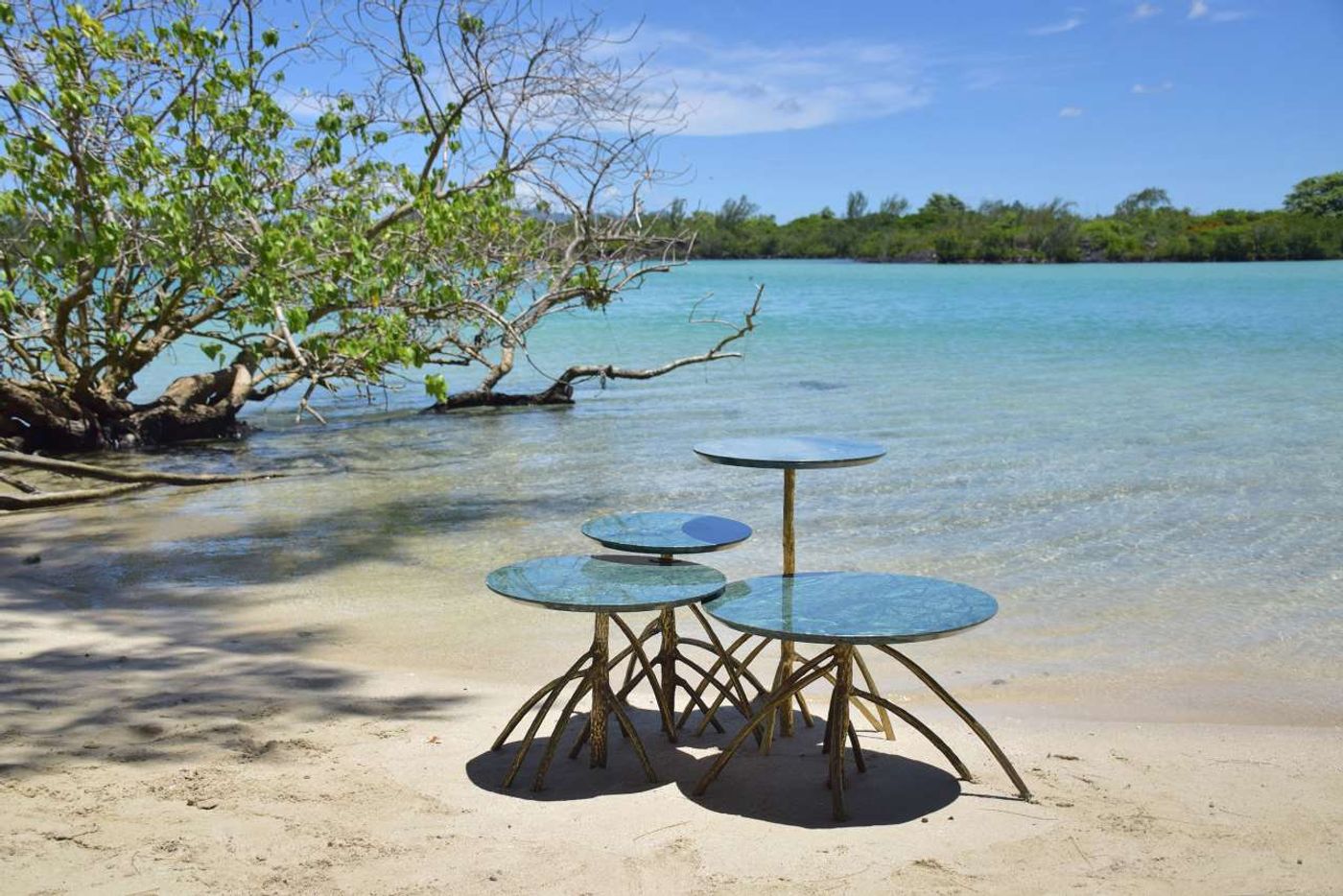
Malgrovia Bronze low table by architect Francesco Maria Messina for Cypraea.
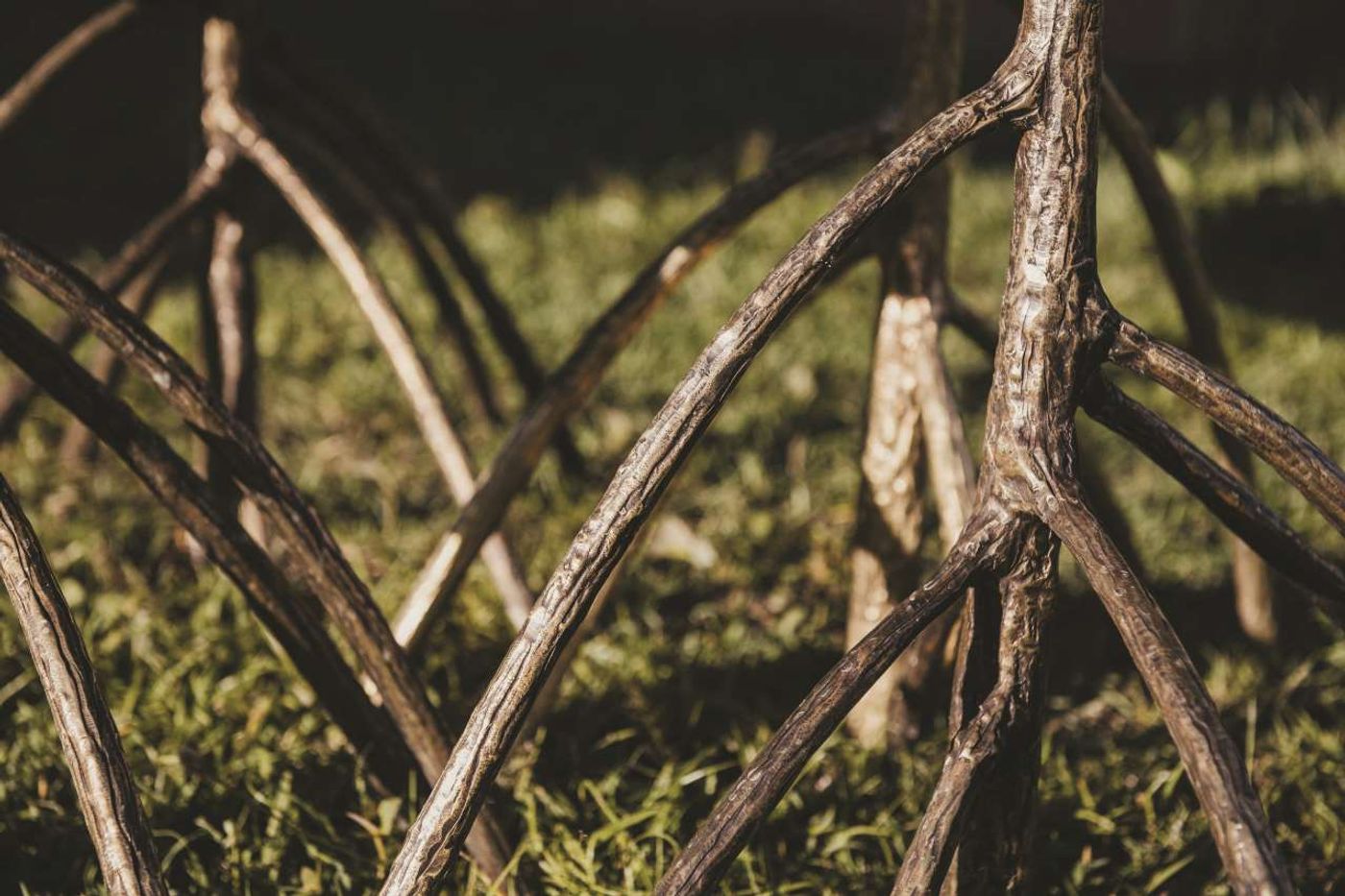
Malgrovia Bronze low table by architect Francesco Maria Messina for Cypraea.
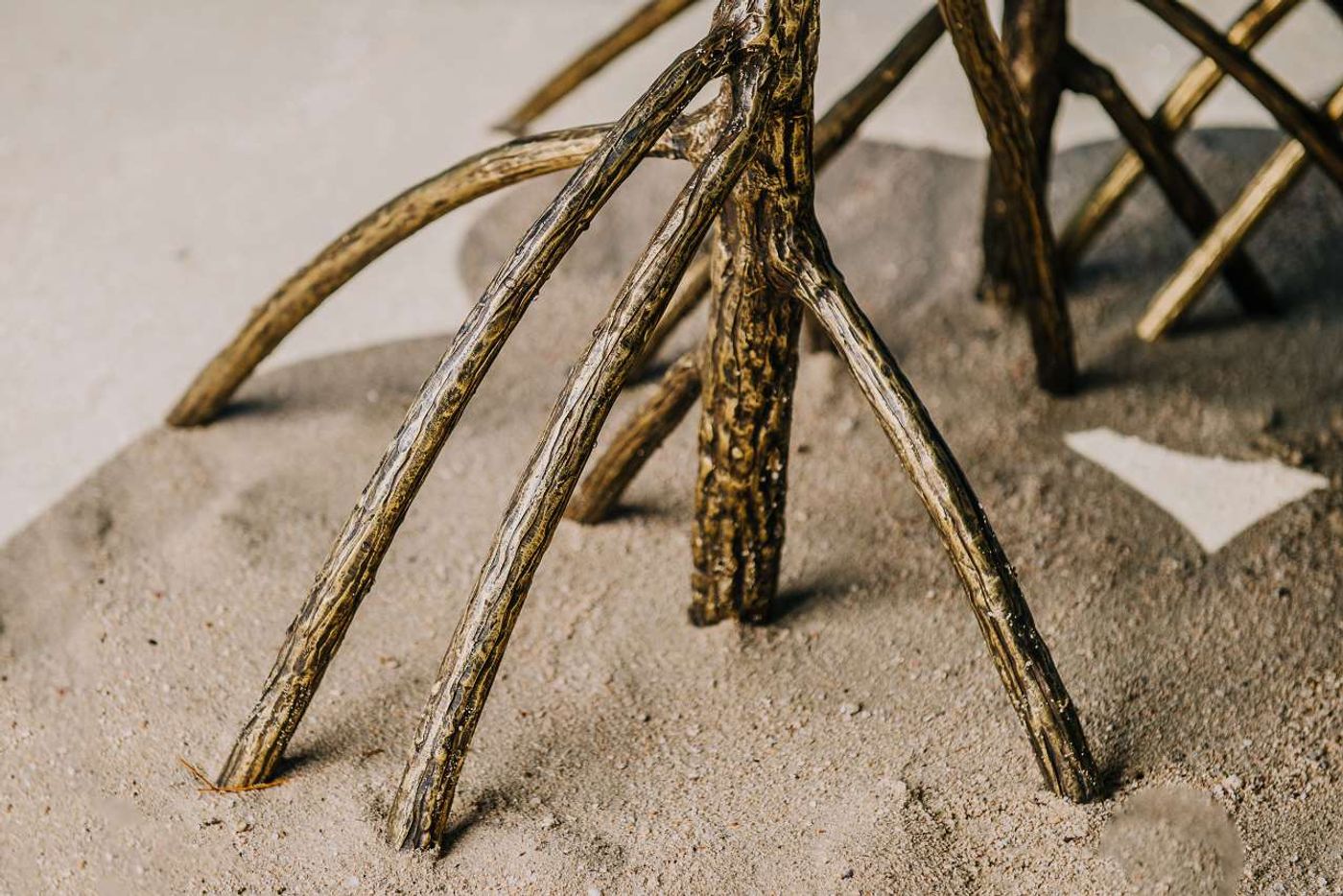
Malgrovia Bronze low table by architect Francesco Maria Messina for Cypraea.
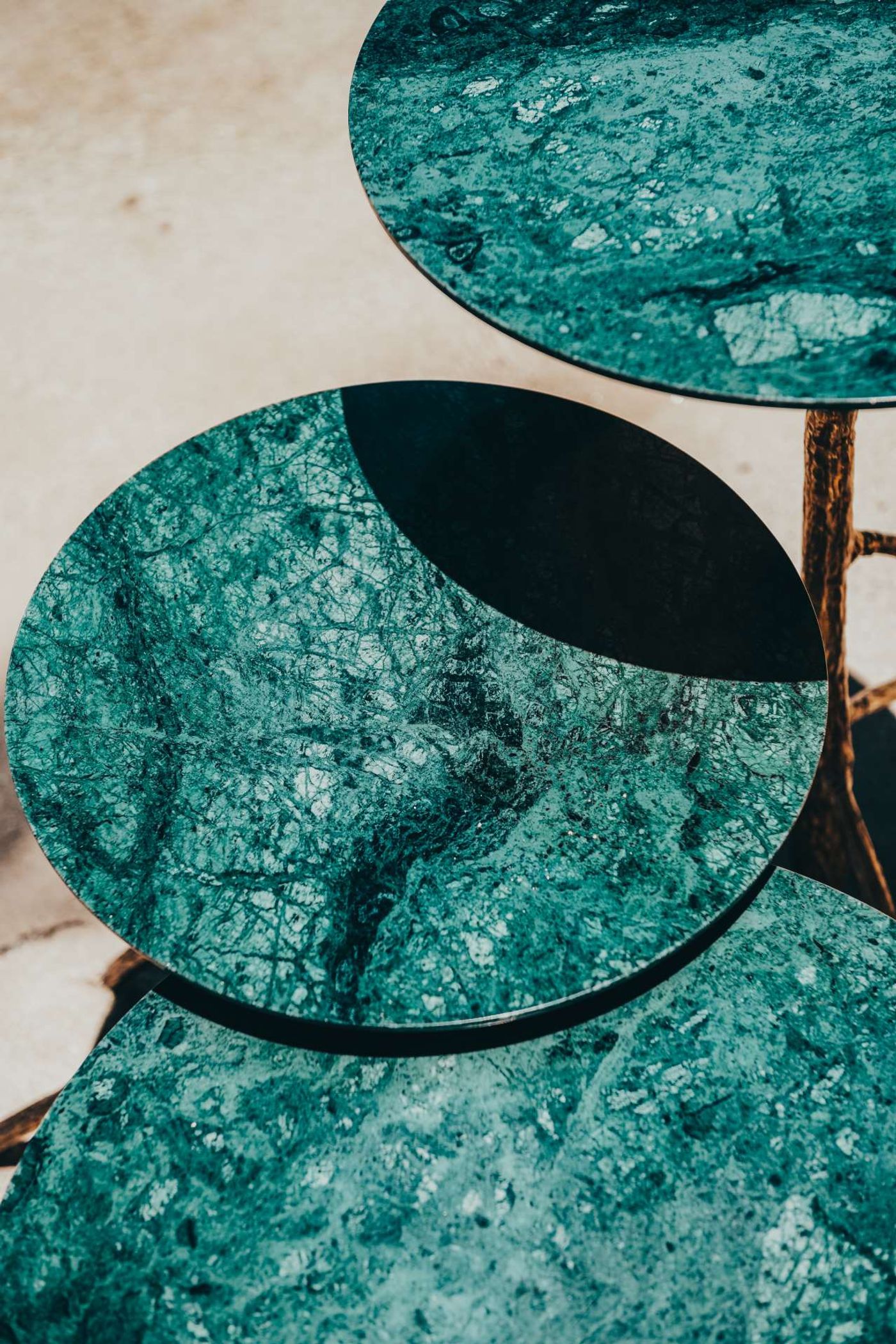
Malgrovia Bronze low table by architect Francesco Maria Messina for Cypraea.

Malgrovia Walnut low table by architect Francesco Maria Messina for Cypraea.
How did you ensure that the natural materials used in the collection were sustainably sourced?
We are the 26th smallest country in the world, an island in the middle of the Indian Ocean. There is nowhere to escape. We need to change the local mindset by stimulating new strategies and bring a better future by maximising the use of sustainable materials. We are working to ensure that we can use exclusively recyclable materials, as well as timber harvested from sustainably managed forests, or sand from certified official partners. Unfortunately, this process requires some time to be applied, as all certifications are time consuming. But we know that this is the direction we are taking and that this is our main strategy.
Tell us a little bit about the process of casting naturally found elements like branches.
We decided to cast both the mangrove branches and the bark furniture in bronze, in order to recreate all their textures, details and faults, as a way of bringing them into people’s homes without the guilt of cutting them down. The process is long and time-consuming. We selected the trees that were more suited to our purpose, choosing those with the largest roots which looked more solid and structurally useful to hold the weight of a cabinet or a sideboard. Neither the mangrove nor the fiddle-leaf fig we used were uprooted or removed, as only a few branches were used for the moulds. The casts are entirely handmade and the metal parts are all made of solid bronze, each piece weighing approximately 10kg!
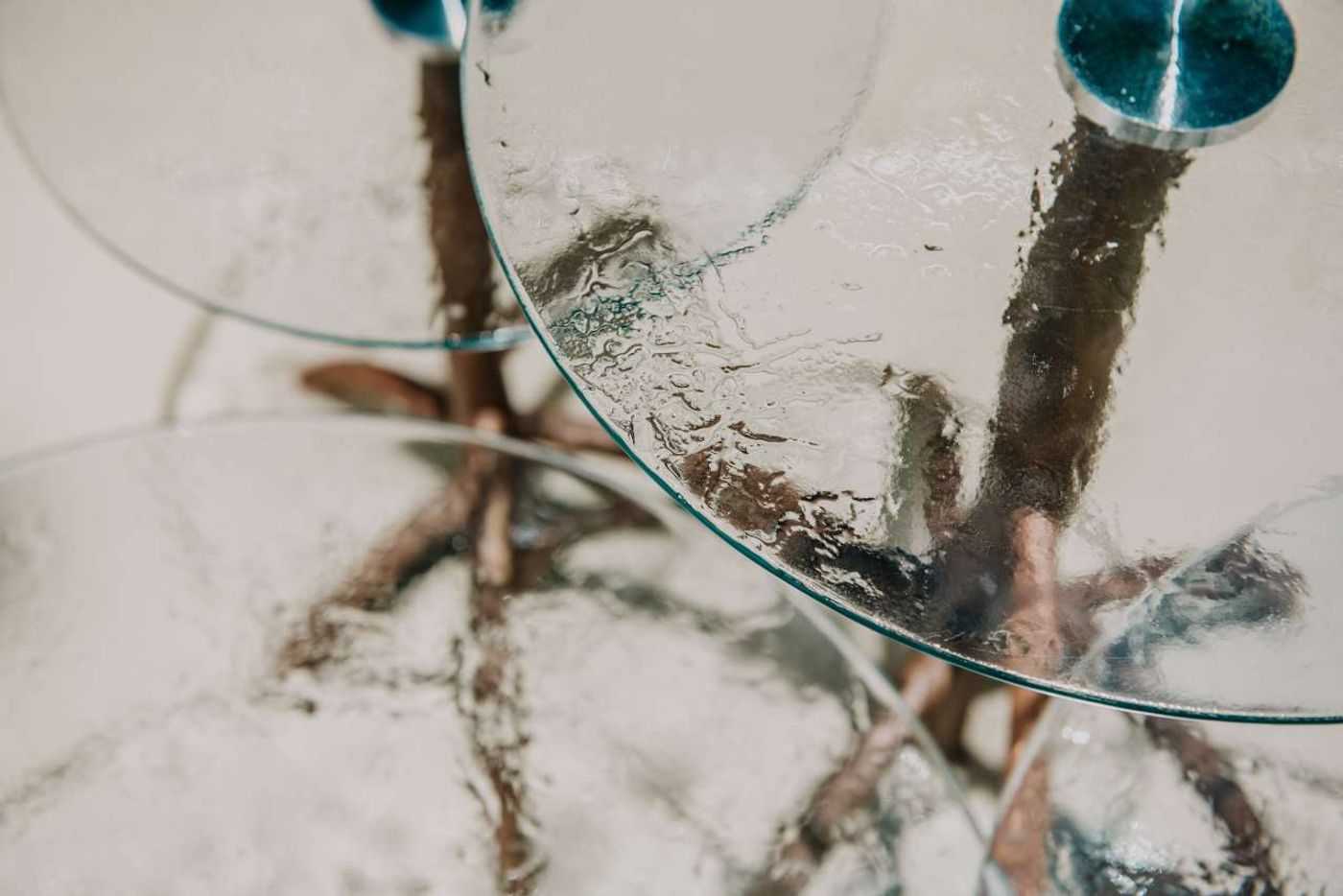
Malgrovia Walnut low table by architect Francesco Maria Messina for Cypraea.

Malgrovia Walnut low table by architect Francesco Maria Messina for Cypraea.
We are working to ensure that we can use exclusively recyclable materials, as well as timber harvested from sustainably managed forests, or sand from certified official partners. -Cedric Lincoln
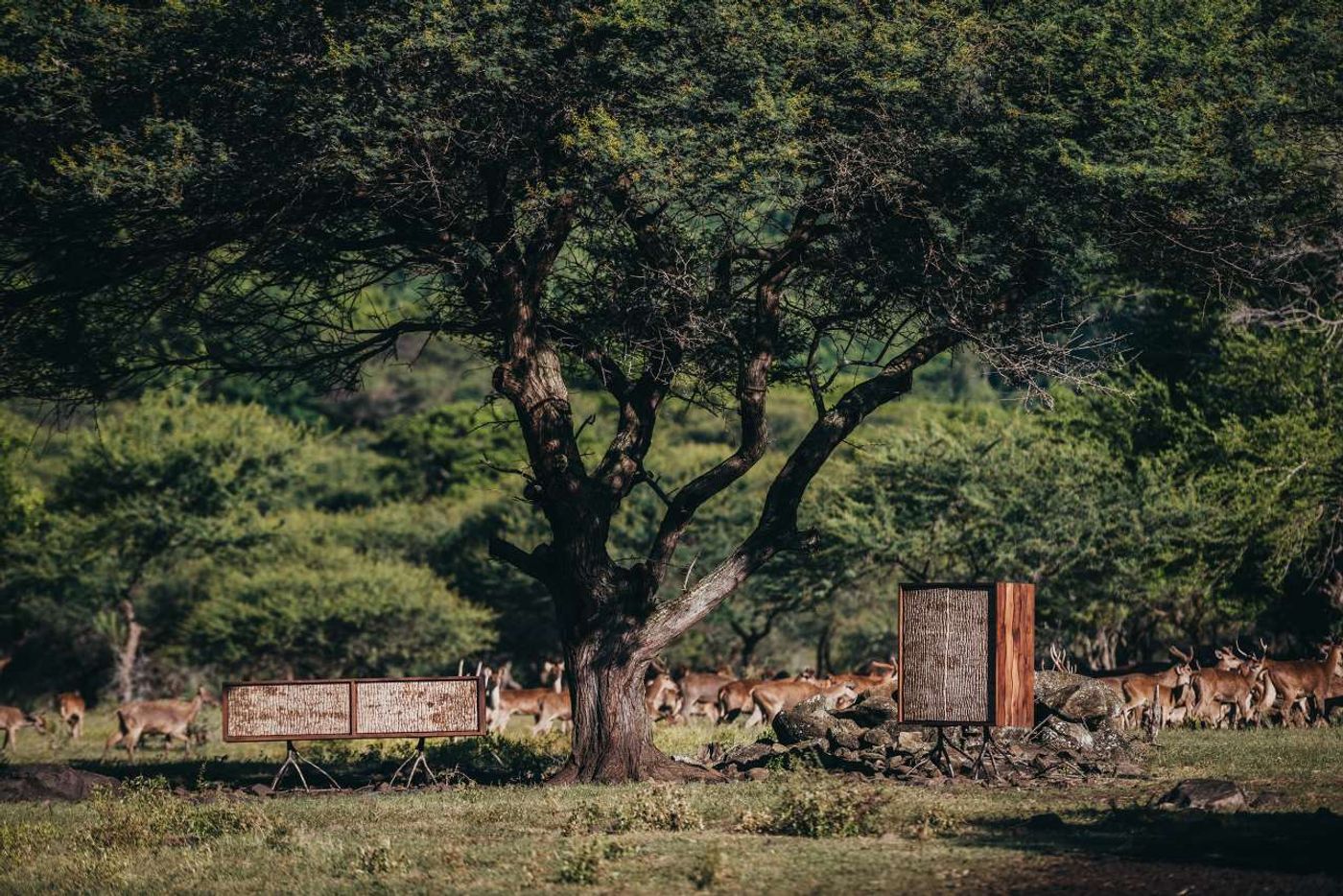
Naturae bark sideboard & bark Cabinet by architect Francesco Maria Messina for Cypraea.
The collection is characterised by a bold combination of innovative manufacturing techniques and painstaking, time-consuming hand-craftsmanship. How challenging was this combination? Was it driven by aesthetic criteria and practical considerations or is there also some conceptual motivation behind it?
All our creations are inspired by nature and we faced great challenges resolving technical issues to achieve this result. There were many instances when we could have taken shortcuts to save time but this was not our goal. We pushed the design and the realisation of the pieces according to the original concept. For example, the hexagonal wood parts of our Rochester collection required the creation of special tools and all the pieces were composed and assembled by hand, which is very time-consuming. In this case the reason was conceptual, as we wanted the final design to be as strong and intact as the initial sketch.
The exclusivity of our furniture also comes from the complexity of the manufacturing process, as sometimes there are more than 10 different materials in one single piece. Our experience in various types of timber helped us find technical solutions faster. The fact that I studied wood engineering in France also helped.

Naturae bark sideboard by architect Francesco Maria Messina for Cypraea.
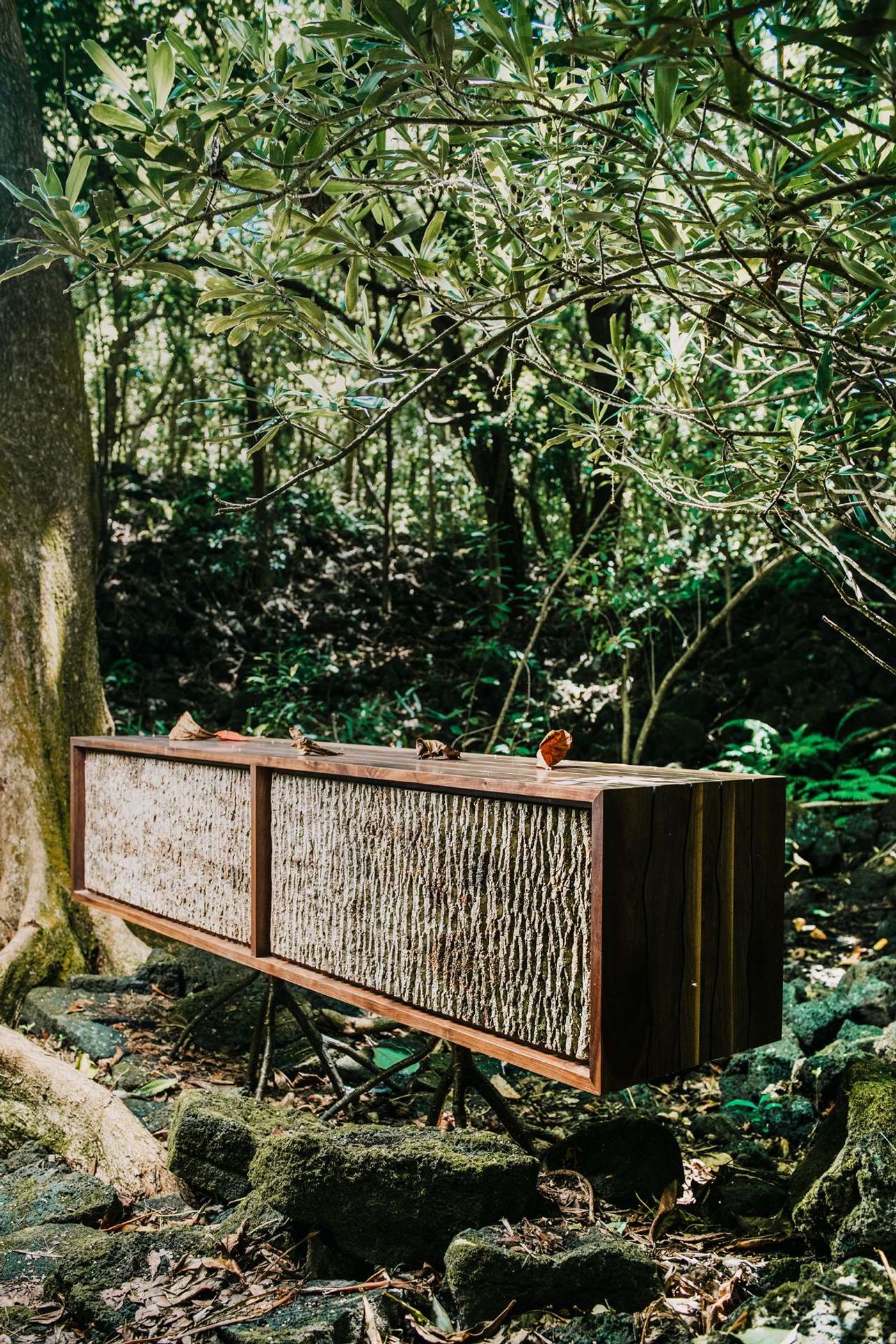
Naturae bark sideboard by architect Francesco Maria Messina for Cypraea.
What is the intention behind the creation of each piece of the collection in a limited edition of 9 items?
We are not industrial and we do not want to become so. Our goal is to be known as a very exclusive furniture brand that only produces limited series. In nature, you will never find two elements that are perfectly identical. The aim of supplying only 9 pieces, each one with its own distinct features, is to give our clients this “natural” exclusivity that no other company does. This strategy isn’t simple because we are standing between two poles that are not always connected: we exhibit in Art Galleries but we also work with furniture dealers.

Odyssey 360 bookshelf by architect Francesco Maria Messina for Cypraea.
The pieces are photographed in the settings that inspired them, perfectly blending into their “natural habitat”. Is the juxtaposition that will inevitably arise when they are placed in an urban environment, let's say in a New York loft, part of your motivation when designing?
By bringing particular fragments of this tropical island into people’s homes, Cypraea aims to stimulate the senses. From the porosity of lava stone and coral sand, to the solidity of wood, the natural materials we have used are high in complexity—a testament to the intricacies of our natural heritage. This is also the reason why the pieces are designed in a very literal way so as to imitate natural forms – or, as in the case of Odyssey , to reflect the surrounding environment, not so much recreating nature, but conversing with it. By placing our pieces in an urban environment, they become the natural ambassadors of our island and its nature. The resulting contrast is meant to surprise and create a similar dialogue between the natural world they represent and the urban environment.

Odyssey V bookshelf by architect Francesco Maria Messina for Cypraea.
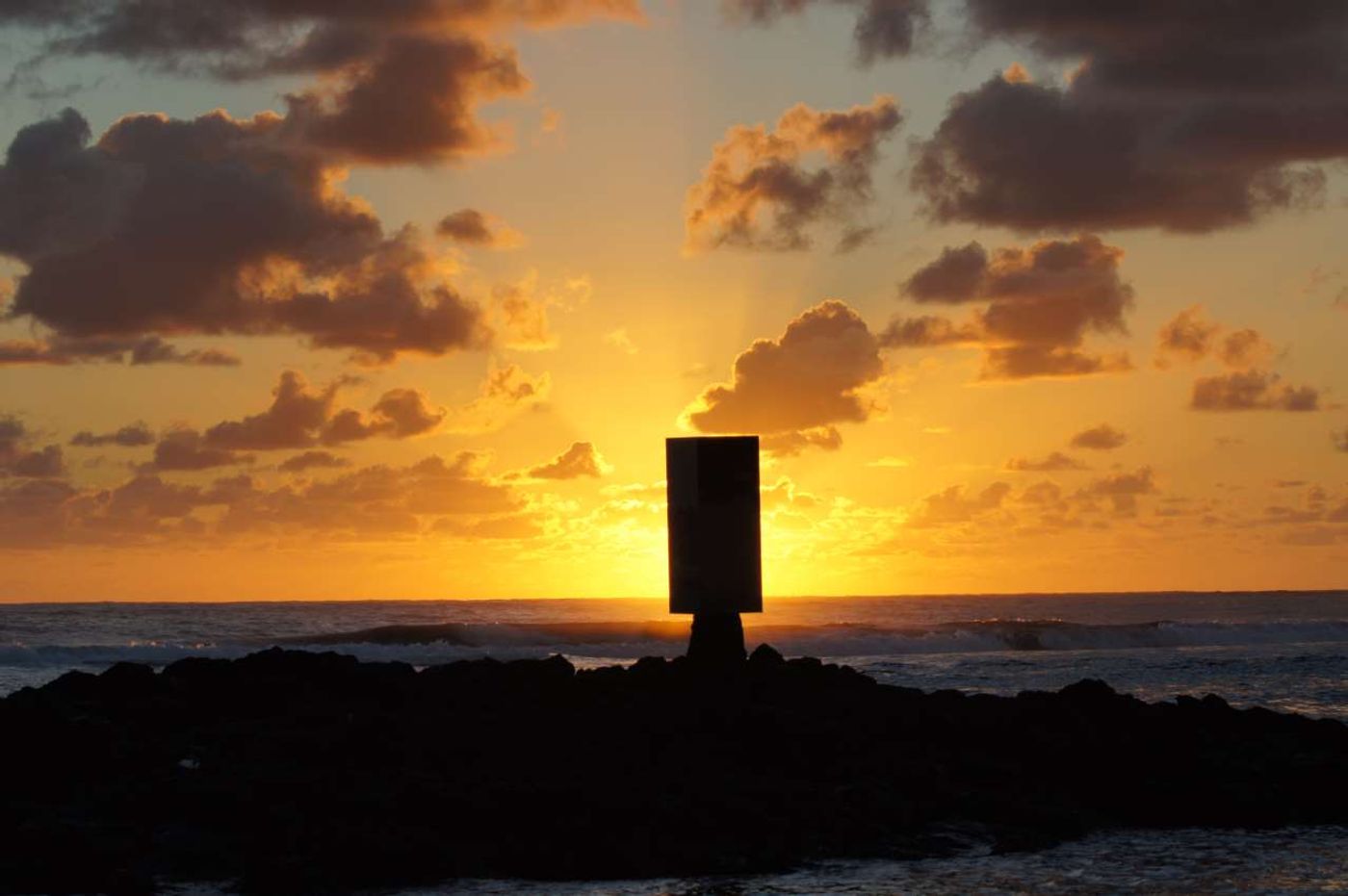
Odyssey V bookshelf by architect Francesco Maria Messina for Cypraea.
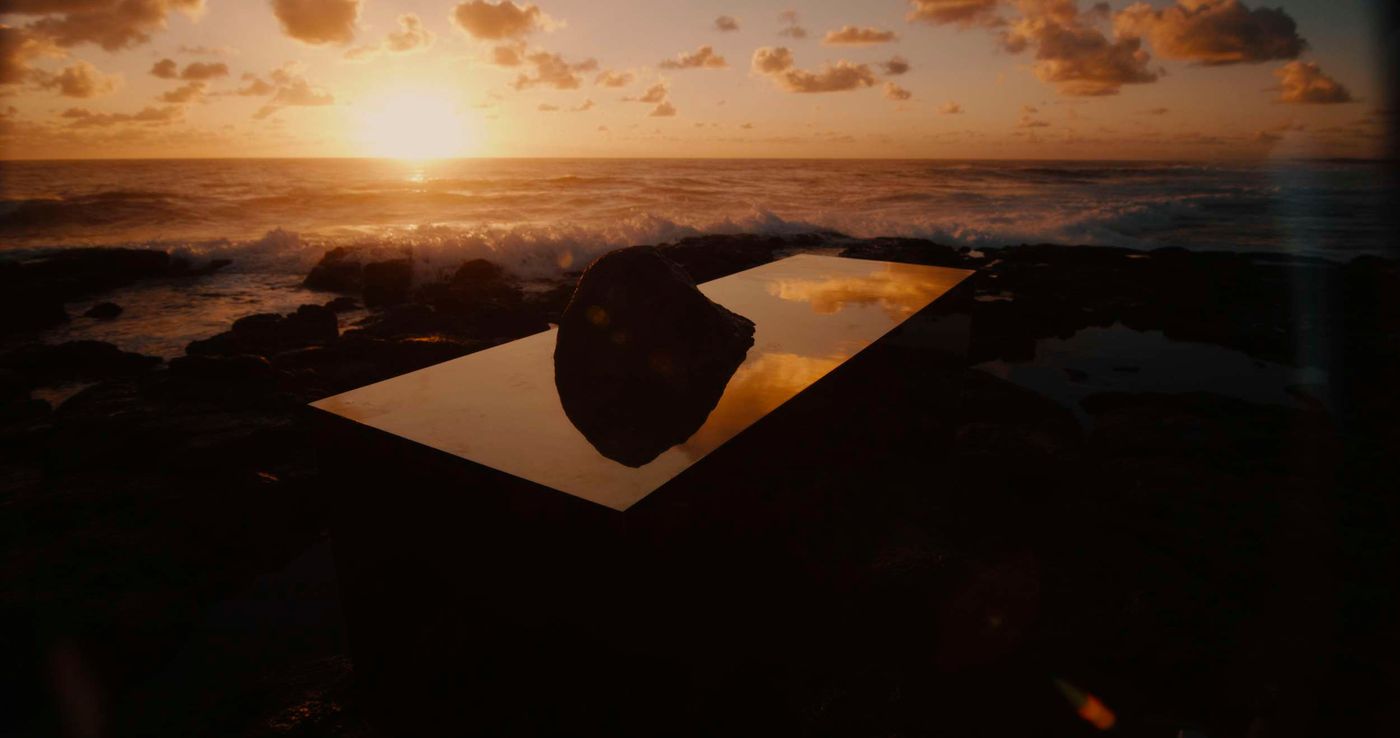
Odyssey H Sideboard by architect Francesco Maria Messina for Cypraea.

Odyssey H Sideboard by architect Francesco Maria Messina for Cypraea.
What’s next for Cypraea?
Mauritius offers an infinite source of inspiration and we intend to keep exploring and reinterpreting its wonders. We want to propose many new models every year, introduce new collections and to continue evolving the already existing ones.
Limiting our furniture to only 9 pieces will challenge us to always innovate and be ahead of design trends. In the near future, we will also partner with Mauritian Designers to promote local talents through our international network. This should also help Cypraea offer diversity through its designs.

Pieter Both cabinet by architect Francesco Maria Messina for Cypraea.
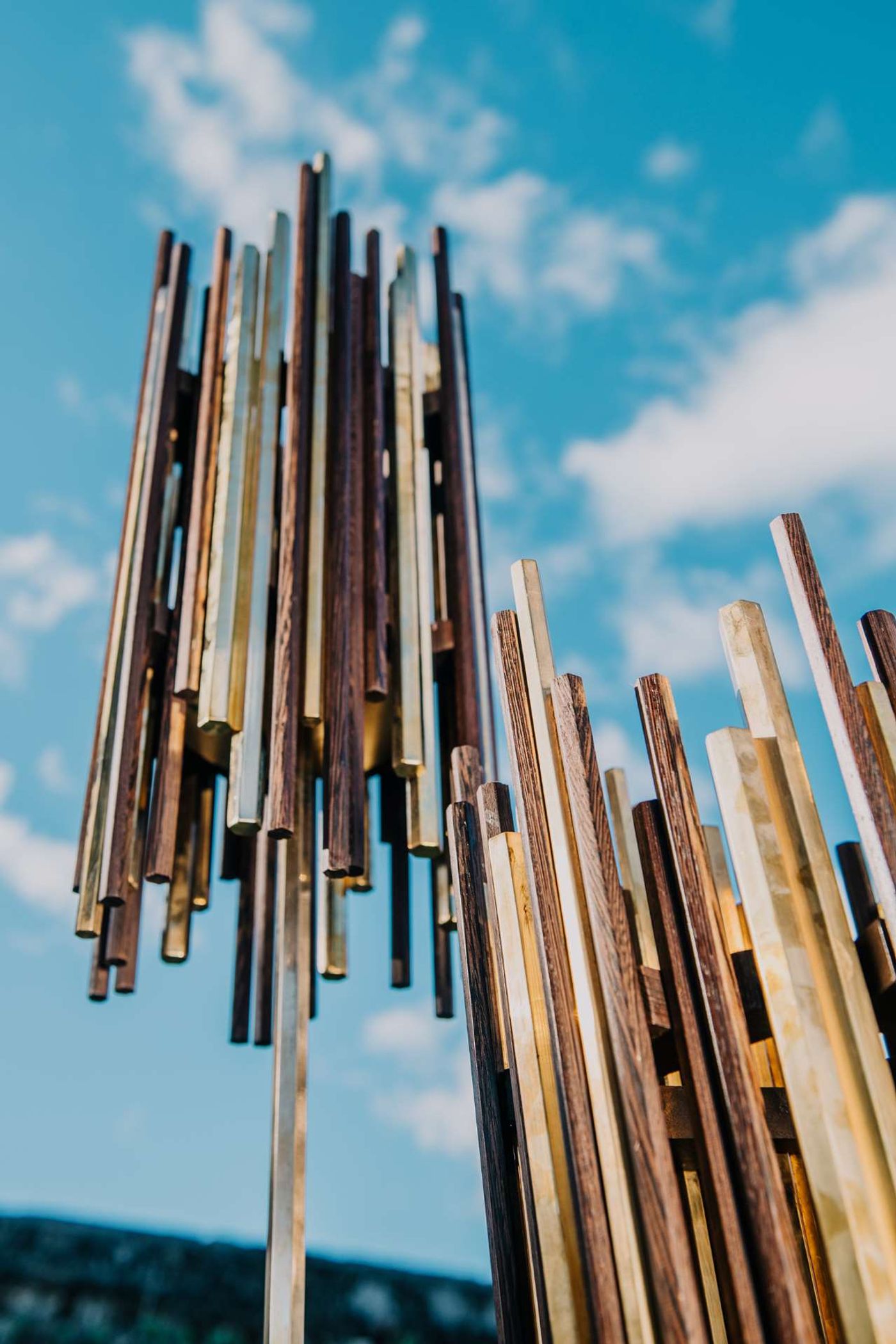
Rochester floor lamps by architect Francesco Maria Messina for Cypraea.
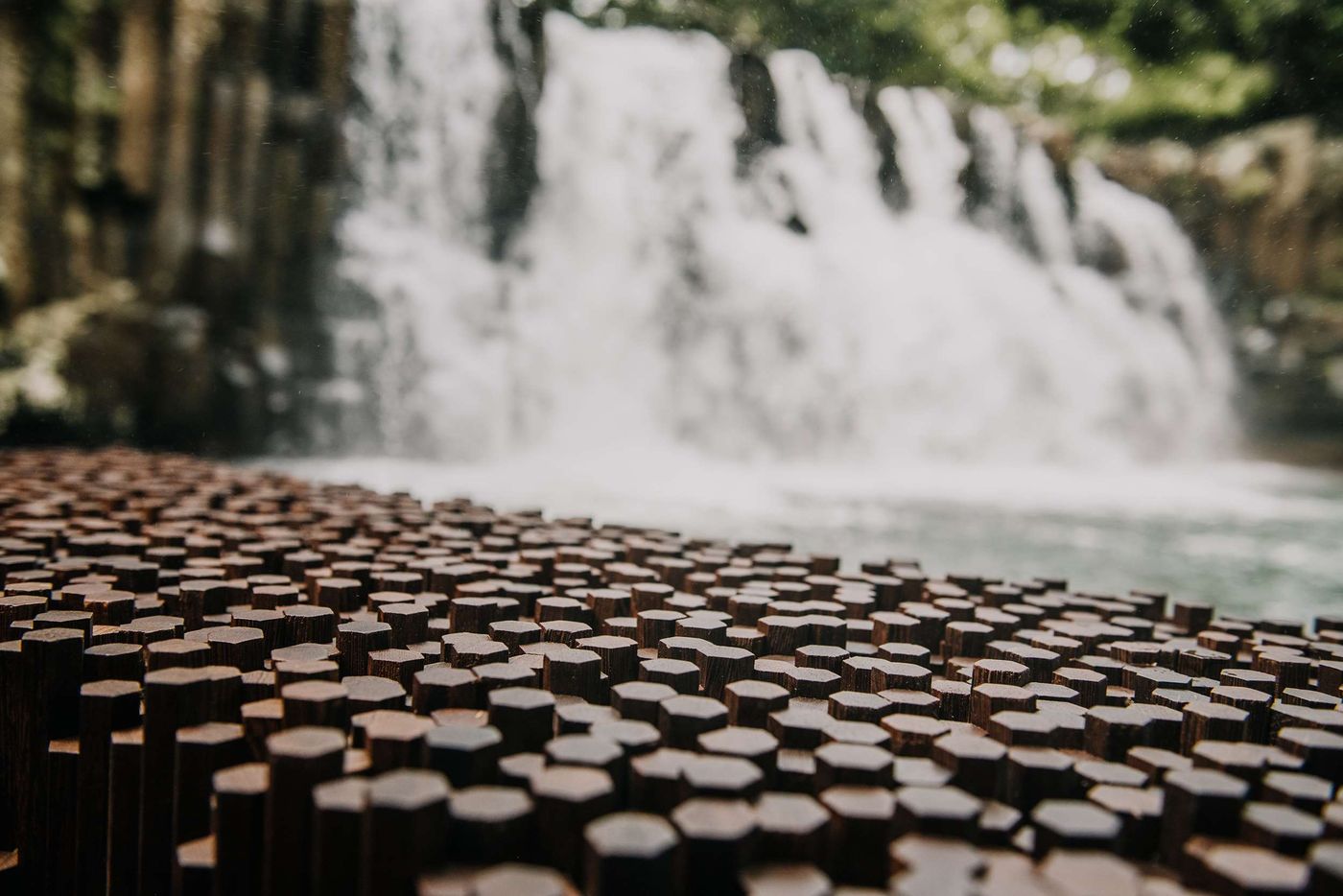
Rochester sideboard by architect Francesco Maria Messina for Cypraea.
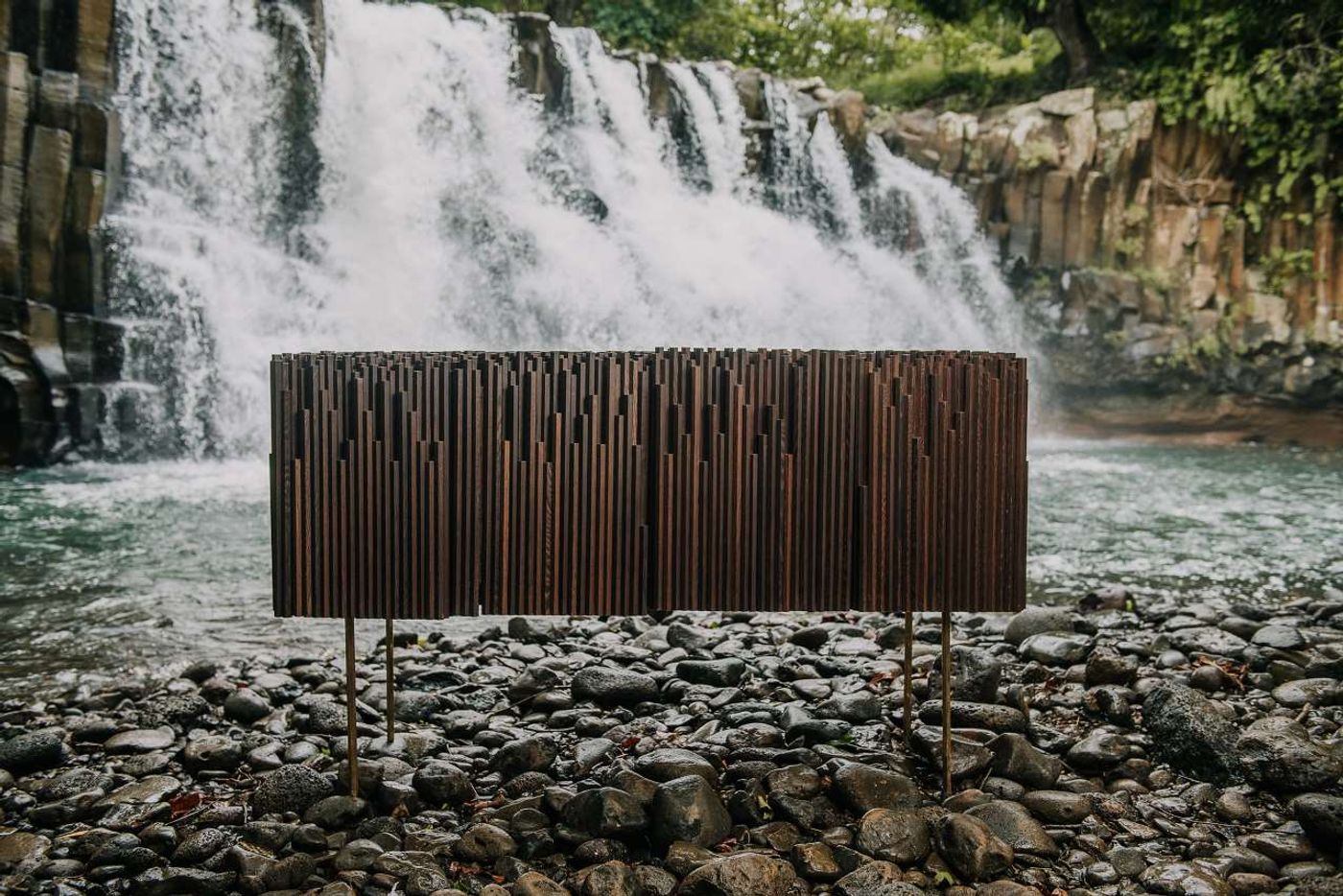
Rochester sideboard by architect Francesco Maria Messina for Cypraea.
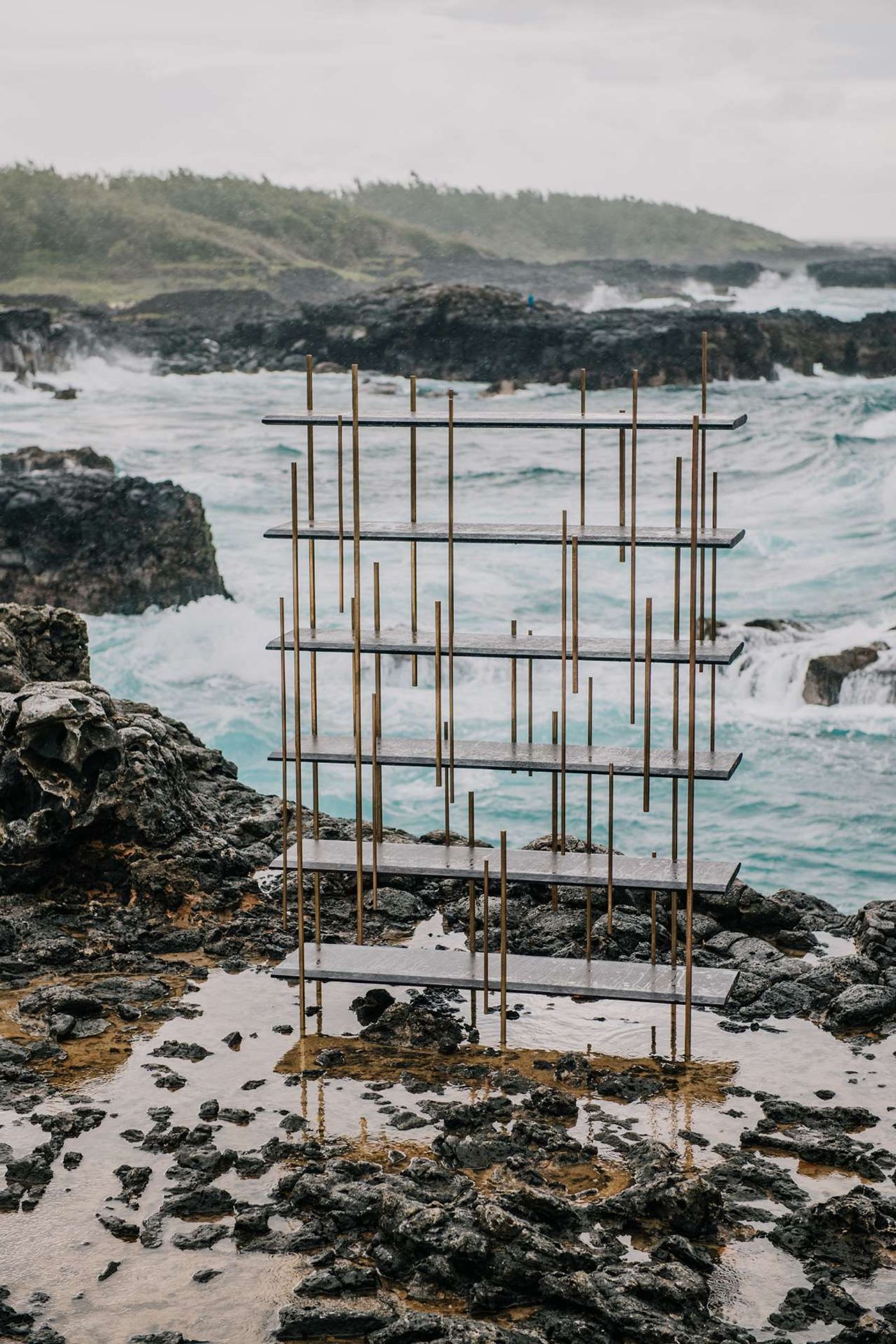
Rochester shelf by architect Francesco Maria Messina for Cypraea.